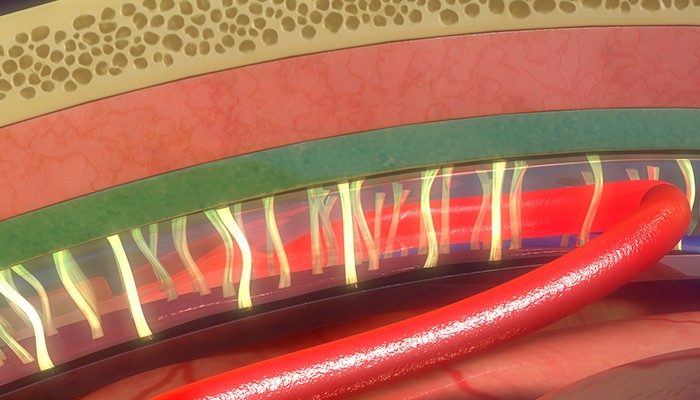The brain, a remarkably complex organ, is meticulously shielded from harm through a combination of protective mechanisms. Beyond the tangible protection provided by the skull, cerebrospinal fluid, and meninges, lies another crucial defense system: the blood-brain barrier (BBB). This sophisticated barrier acts as a gatekeeper, regulating the passage of substances between the bloodstream and the brain’s delicate neural tissue.
The blood-brain barrier (BBB) is a highly selective interface that separates the circulating blood from the brain extracellular fluid (BECF) in the central nervous system (CNS). It functions to protect the brain from harmful substances while allowing essential nutrients to reach it. This article delves into the intricacies of the BBB, exploring its structure, function, and clinical implications.
Discovery and Structure of the Blood-Brain Barrier
The existence of the blood-brain barrier was first suggested in the late 19th century by Paul Ehrlich, who observed that dyes injected into the bloodstream stained all tissues except the brain and spinal cord. However, the physical structure of the BBB remained elusive until the advent of electron microscopy in the 1960s.
 Paul Ehrlich dye experiment showing the blood-brain barrier.
Paul Ehrlich dye experiment showing the blood-brain barrier.
Today, we understand that the key structural component of the BBB is the endothelial tight junction. Endothelial cells, which line the interior of all blood vessels, are exceptionally close to each other within the brain’s capillaries, forming these tight junctions. This unique arrangement restricts the passage of most molecules, effectively creating a barrier.
These tight junctions are not merely physical barriers; they are complex structures regulated by a variety of proteins. They allow only small, fat-soluble molecules and certain gases to pass freely into the brain tissue. Larger molecules, such as glucose, can cross the BBB through specialized transporter proteins, which act like selective doors, permitting entry only to specific molecules.
Furthermore, cells surrounding the endothelial cells, such as astrocytes and pericytes, play a crucial role in regulating the BBB’s permeability. These cells communicate with the endothelial cells, influencing their selectivity and ensuring the brain’s delicate environment remains stable.
Why is the Blood-Brain Barrier Important?
The BBB plays two critical roles: protecting the brain from harmful substances and maintaining a stable internal environment.
- Protection from Toxins and Pathogens: The BBB prevents circulating toxins, pathogens, and other harmful substances from entering the brain tissue, which could cause infections, inflammation, or neuronal damage.
- Maintaining Homeostasis: The BBB helps maintain constant levels of hormones, nutrients, and water in the brain. Fluctuations in these levels can disrupt neuronal function and lead to neurological disorders.
When the Blood-Brain Barrier Fails
When the blood–brain barrier is compromised, it can have severe consequences for brain health.
Bacterial infections, such as meningococcal disease, can disrupt the BBB. Meningococcal bacteria can bind to the endothelial wall, causing tight junctions to open, allowing bacteria and toxins to infect the brain tissue, leading to inflammation and potentially death.
In conditions like multiple sclerosis (MS), a defective BBB allows white blood cells to infiltrate the brain and attack myelin, the protective sheath around nerve fibers. This disrupts neuronal signaling, leading to a range of neurological symptoms.
Overcoming the Blood-Brain Barrier: Drug Delivery Challenges
The very effectiveness of the BBB in preventing unwanted substances from accessing the brain presents a significant challenge in treating neurological disorders. Most potential drug treatments cannot readily cross the BBB, hindering the development of effective therapies for conditions like Alzheimer’s disease, Parkinson’s disease, and brain tumors.
Researchers are exploring several strategies to overcome this challenge:
- Trojan Horse Approach: This involves attaching the drug to a molecule that can cross the BBB via a transporter protein, effectively “smuggling” the drug into the brain.
- Temporary Disruption of the BBB: Techniques such as focused ultrasound can temporarily open the BBB, allowing drugs to enter the brain.
Focused ultrasound, in combination with injected gas microbubbles, can temporarily and safely open the BBB to allow protective blood-borne factors and therapeutic drugs into the brain. Studies have shown that this approach can improve cognition and reduce toxic plaque accumulation in the brain of mice with Alzheimer’s disease.
The Future of Blood-Brain Barrier Research
Research into the blood-brain barrier is a rapidly evolving field. Scientists are continually working to better understand its complex structure and function, identify new ways to overcome its limitations, and develop more effective treatments for neurological disorders. Future research will likely focus on:
- Developing more targeted drug delivery systems that can selectively cross the BBB.
- Identifying new biomarkers that can detect BBB dysfunction in the early stages of neurological disorders.
- Developing strategies to repair and restore the integrity of the BBB in patients with neurological diseases.
Conclusion
The blood-brain barrier is a critical protective mechanism that safeguards the brain from harmful substances while ensuring its access to essential nutrients. Understanding the intricacies of the BBB is crucial for developing effective treatments for neurological disorders. While the BBB presents a significant challenge to drug delivery, ongoing research is paving the way for innovative strategies to overcome this obstacle and improve the lives of patients with brain diseases.